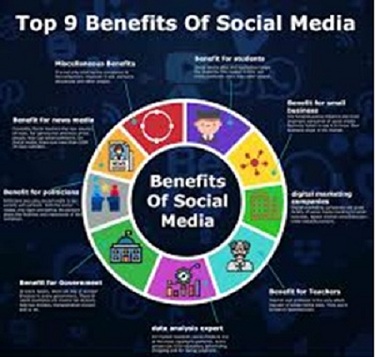Table of contents
The Emergence of Social Media as the Source of News
The Advantages Social Media Offers as a News Platform
New Ways of Political Engagement
Challenges and Risks of Social Media as a News Source
Balancing Algorithms with Authenticity
Introduction
In the foreground, the metamorphosis of traditional news delivery into an arrangement where news is very fast, accessible, and interactive has engendered the conception of social media among the masses. It has been there, doing a double-edged firm in the good or in the bad, and thus in this information age.
The Emergence of Social Media as the Source of News

1. User-Friendliness
– Users can also glean news through Twitter, Facebook, and Instagram, mostly before any mainstream media houses publish it, and compel users to remain updated through their notifications and trending hashtags in real-time.
2. User Engagement
– Interaction is the greatest asset that social media has brought between news outlets, journalists, and audiences, being able to discuss and give other perspectives aside from the current event coverage.
– On platforms like YouTube or Instagram, inbuilt live streaming capability has allowed everyone to directly access events as they unfold, eliminating the traditional gatekeeping.
3. Diversified Content Source
– The users themselves can sample several various views from well-known media houses, independent bloggers, and citizen journalists.
The Advantages Social Media Offers as a News Platform

1. Speed and Real-Time Updates
– Breaking news spreads fast to make sure that all critical pieces of information reach people right on time.
– Usually, natural disasters, political changes, or some major happenings are first reported by these platforms and are kept updated as they happen.
2. Widening the Access to Information
In these modern democracies, social networking channels are making grassroots voices and underprivileged people shout louder while reducing their reliance on big media monopolies.
– Such causes as the MeToo and Black Lives Matter efforts have progressively enlightened the world on social justice issues.
3. Freest Audience Engagement
This trend at the moment in the modern global society is that social media is beginning to create modern democracies. Their shouts for both grassroots voices and marginalized segments are encouraged, but with a lessening of their dependence on big mass media monopolies.
– Such causes as the #MeToo and #BlackLivesMatter movements show how they increasingly enlighten society about various social justice issues.
New Ways of Political Engagement
Social media is well established as a traditional medium. This title now includes the topic of social media platform studies. Increased methods of political engagement.
Challenges and Risks of Social Media as a News Source

1. Spread of Misinformation
– Because of the lack of stringent editorials, erroneous or misleading information will often go viral through social media networks.
– Viral fake news stories can sway or influence public opinion of elections, or even incite violence, as in cases of political propaganda and misinformation campaigns.
2. Echo Chambers and Polarization
– Algorithms tend to show users content that matches what they are inclined to favor, further confirming their biases and limiting their viewing experience of various perspectives.
– This breeds echo chambers in which opinions are similar and deepens—sometimes even severing—societal divides.
3. Declining Credibility
– As evidence for nonverifiable sources and content generated by a user, these can reduce faith in the news shared on these platforms.
– Clickbait headlines and sensationalism reduce journalistic integrity.
4. Manipulation and Propaganda
– Bad actors, including government-sponsored trolls, utilize social media to invade, propagate their message, and even affect popular sentiment.
Balancing Algorithms with Authenticity
Algorithms are the ones working for a social network. They accurately determine what shows up on a particular user’s feed. Though they have integral contributions to users’ engagement in social network sites, they are also a source of danger, with people putting popularity above authenticity.
Role of Algorithms
1. Prioritization of Contents
– Algorithms deal primarily with data abuse of the users in order to customize their feeds, showing them what would most likely engage that viewer.
– Focusing on likes, shares, and comments, mass-promoted according to these, leads towards sensationalism over actual news.
2. Filter Bubbles
– The kind of exposure that most people now have promotes the formation of ideologies without the contrary influence of ideas that go against their views.
– This confinement into a single line of arguments strengthens self-confirmatory bias that makes other people’s opinions quite difficult for them to shake up.
Balancing Act
1. Upholding Verified Content
– News feeds should hence promote verified and credible sources, with the platforms partnering with fact-checking organizations to combat misinformation.
– Twitter- and Facebook-like labels and warnings on potential false content will then be able to guide users toward locating credible information.
2. Algorithm Openness
– Disclosing how the user algorithms work increases justification for understanding and altering what the user sees.
– Customization options to disable or modify algorithms should be available to maximize the ability of users to manage feeds.
3. Diversity of Content Promotion
– Platforms can introduce features encouraging exposure to the diversity of viewpoints to balance the echo chambers.
– “Diversity of perspective” mechanisms can suggest content to users that is unusual for them.
4. Raising Awareness of Media Literacy
– The users need to be educated on spotting credible sources of news and identifying fake sites.
– Stronger development strategies for critical analysis and skepticism would equip users with the means for successful transactions within the news space.
-Conclusion
In reality, social media broadcasts news with people as the tool. It is omnipowerful because it educates and empowers while misleading and polarizing. The next step towards authenticizing such developments is establishing an approach that balances the algorithmic efficiency of the platforms with authenticity, responsibility, and inclusive news ecosystem development. Such initiative must entail the collaboration between technology providers, journalists, and audiences to make the benefits outweigh risks as they occur.


Leave a Reply